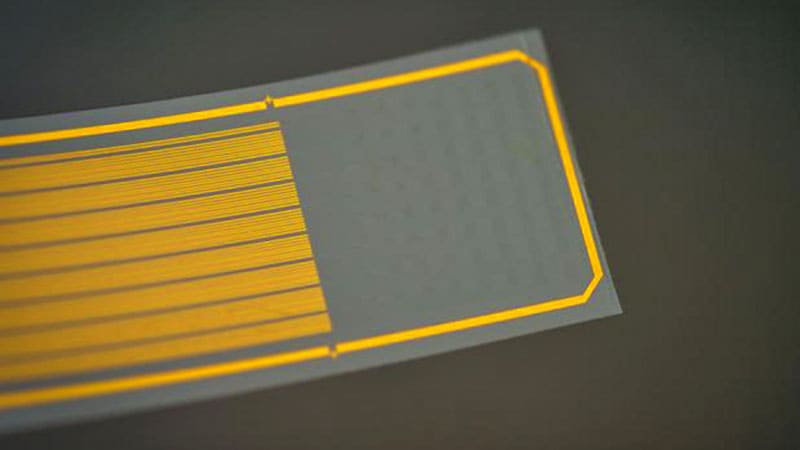Revolutionizing Brain Activity Monitoring Technology
Conceitos essenciais
Revolutionary technology enables non-invasive monitoring of deep-brain activity.
Resumo
The content discusses the development of a thin, flexible implant that can monitor deep-brain activity without the need for invasive procedures. Researchers from the University of California, San Diego, have created a device that resides on the brain's surface and can infer neural activity from deeper layers. By combining electrical and optical imaging methods with artificial intelligence, the device can predict deep calcium activity from surface signals. This breakthrough technology has the potential to advance our understanding of brain function and lead to new treatments for neurological disorders.
Key Highlights:
Traditional methods for recording deep-brain activity involve invasive procedures with sharp metal electrodes.
Researchers have developed a thin, flexible implant that can monitor deep-brain activity without penetrating the brain.
The device uses a polymer strip packed with graphene electrodes to predict deep calcium activity from surface signals.
Combining electrical and optical imaging methods with artificial intelligence allows for a comprehensive understanding of brain activity.
The technology could revolutionize the field of neurophysiology and lead to minimally invasive treatments for neurological disorders.
New Tech Could Record Deep-Brain Activity From Surface
Estatísticas
"A rapidly growing area in materials science and engineering is to fix the problem by designing electrodes that are softer, smaller, and flexible."
"The researchers used the device — a polymer strip packed with graphene electrodes — to predict deep calcium activity from surface signals."
"If graphene electrodes are very small — in this case, 20 µm in diameter — they become more resistant to the flow of electricity."
Citações
"Almost everything we know about how neurons behave in living brains comes from data collected with either electrophysiology or two-photon imaging." - Joshua H. Siegle, PhD
"The tech could help scientists study brain activity 'in a way not possible with current single-function tools.'" - Luyao Lu, PhD
Principais Insights Extraídos De
by Clarissa às www.medscape.com 01-25-2024
https://www.medscape.com/viewarticle/new-tech-could-record-deep-brain-activity-surface-2024a10001t6
Perguntas Mais Profundas
How might this new technology impact the field of neuroscience in the future?
The development of this new technology could revolutionize the field of neuroscience by providing a minimally invasive method to record deep-brain activity without the need for penetrating the brain tissue. This advancement could lead to a better understanding of how neurons behave in living brains, offering insights into brain function and potential treatments for neurological disorders. The ability to predict deep calcium activity from surface signals using a combination of electrical and optical imaging methods, along with artificial intelligence, opens up new possibilities for studying brain activity in ways not previously possible.
What are the potential ethical considerations surrounding the use of this advanced brain monitoring technology?
The use of advanced brain monitoring technology raises several ethical considerations. One major concern is the potential invasion of privacy and the risk of misuse of the data collected from individuals' brain activity. There are also questions about consent and the implications of using such technology on vulnerable populations, such as those with cognitive impairments or mental health conditions. Additionally, there may be concerns about the long-term effects of implanting devices in the brain and the need for ongoing monitoring and maintenance. Ethical guidelines and regulations will need to be established to ensure the responsible and ethical use of this technology.
How could the integration of artificial intelligence further enhance the capabilities of this device in monitoring brain activity?
The integration of artificial intelligence (AI) could significantly enhance the capabilities of this device in monitoring brain activity by enabling the device to learn and adapt to patterns in neural activity. AI algorithms could analyze the data collected from the electrodes and sensors, allowing for real-time monitoring and interpretation of brain signals. This could lead to more accurate predictions of deep brain activity from surface signals, as well as the ability to detect abnormalities or changes in brain function. AI could also help in developing personalized treatment plans based on individual brain activity patterns, leading to more targeted and effective interventions for neurological disorders.
0
